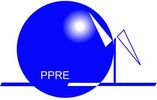PPRE alumni, Rania Elhadi Adam (PPRE 2007-09) reports on her journey after PPRE and her return to Oldenburg as a Postdoctoral Researcher.
After PPRE, I returned to Sudan and worked as a researcher at the Solar Energy Institute, National Energy Research Centre, Ministry of Higher Education and Scientific Research, Khartoum, Sudan. Then I was accepted as a PhD student at Linköping University, Department of Science and Technology in Materials Science, in August 2015 and defended my PhD on the 17th of April 2020 with the thesis title “Synthesis and Characterization of Some Nanostructured Materials for Visible Light-driven Photo Processes”
(thesis link).
After the PhD, I returned to Sudan and I was continue working as a researcher and head of Solar Energy Institute, National Energy Research Center, Ministry of Higher Education and Scientific Research, Khartoum, Sudan, Coordinating and supervising research projects related to solar energy applications.
Now I am back in Oldenburg and I have started my Postdoctoral research in physical chemistry, the group of nanophotonic and surface chemistry Physical Chemistry - Al-Shamery // University of Oldenburg (uol.de) with project title: “CuO/ZnO/NiO heterojunction for Solar- driven Water Splitting”. The project is Funded by Alexander von Humboldt under the Philipp Schwartz Initiative program for two years Philipp Schwartz Initiative - Alexander von Humboldt-Foundation.
Postdoctoral Research Summary:
Solar to hydrogen conversion is attracting researchers due to their sustainability and environmental impact to society. This project aims to explore a new architecture of nanomaterial-based on Copper oxide, Zinc oxide, and nickel oxide for hydrogen production from solar-driven water splitting. Hydrogen is a completely clean and sustainable energy fuel that only emits water as exhaust. However, the production of hydrogen from solar-driven water splitting is still hampered by its low conversion efficiency and poor stability of the materials that can be used. This project aims to address these issues by rational design and construction of Copper oxide, Zinc oxide, and nickel oxide heterojunction photoelectrode. The proposed structure would harvest solar energy from the visible to the ultraviolet region. Copper oxide and zinc oxide are used due to their unique photocatalytic, optical, and electrical properties. Moreover, the nanostructured shape would reduce light reflection and increase the surface area for the water-splitting reaction. The catalytic material nickel oxide would enhance the activity and stability of the water-splitting system.
The result of this project will add a new inside design and construction of materials with high conversion efficiency toward the hydrogen evolution reaction.
Text by: Rania Elhadi Adam (PPRE 2007-09).




